After a wet and salty ride from Daniels Bay, we arrived back in the main anchorage at Taiohae. We dropped the anchor and headed into town for Wi-Fi access to source a new outboard propellor and check the weather for the coming days. We had already been on Nuku Hiva for over a week and were itching to see the other islands in the Marquesas. After trying to connect at a few different restaurants, we realized that getting decent Wi-Fi anywhere on the island was a bit of a joke. Most of the time the connections were so poor you couldn’t even load e-mail so we finally resorted to buying data recharge cards that sell for $20 per 10GB. Furthermore, you can only use the 4G data at a handful of islands. I should also mention that almost every establishment on the island closes for lunch and most of them don’t reopen until the following day… because of “island time”. Needless to say, we all found it incredibly difficult and frustrating to be productive here when internet access is needed for the task.
Unfortunately, the forecast for the coming weeks didn’t look great for us to travel to the other islands with the exception of Ua Pou which lies directly to the south. The wind was coming directly from the southeast which was the direction we needed to head to visit Hiva Oa and Fatu Hiva. Normally we would wait for a break in the wind and just motor to the destination, but the trade winds kept blowing… and blowing… and blowing. Normally, boats crossing the Pacific can make landfall in Fatu Hiva, then make their way following the trades sailing northwest to each of the islands. But because of COVID, Nuku Hiva had the only immigration office in the island group, so that’s where we had to make landfall upon arrival. Not only was the weather compromising our plans of circumnavigating Nuku Hiva, it might be canceling our plans to see most of the Marquesas other islands as well. It seemed we made it all this way just to be stuck in one place that doesn’t even have decent Wi-Fi!
We still had one other bay, named Controller Bay, to the east on the south side of Nuku Hiva that we could make it to. It was another slow and rolling upwind motor, but we finally made it and found ourselves to be the only boat in the anchorage. Several hours later, we were joined by another boat slowly tacking its way into the bay, SV Silver Harmony captained by Robert, a solo-sailor. Robert is originally from Scotland and was four years into his circumnavigation aboard his 31-foot monohull. He crossed the Atlantic from the UK to Brazil where he fell in love with the country. He stayed in Brazil for a couple of years before continuing south, rounding the Cape of Good Hope in the Southern Ocean. He got stuck in Chile during COVID and ended up saying there for another two years. His Pacific crossing was a few weeks longer than ours but we had arrived in Nuku Hiva around the same time. He has taken on crew from time to time but had to make the Pacific crossing alone because he doesn’t have a water maker and could only store enough water onboard for one person. Despite being in his early 40s, Robert is an old school sailor and still uses paper charts, minimal electronics, and only runs his engine if needed during anchoring. We had him over for dinner that night and became fast friends.
Controller Bay was comfortable but not particularly beautiful nor otherwise noteworthy. We decided it was time to depart Nuku Hiva for the only other island we could get to without burying the bow in saltwater. We set sail to the south making the 5-hour trip to Oa Pou. As we approached the island, we were in awe at the stunning spires that erupted form the landscape. The scenery was dramatic but much drier than the lush jungle vegetation we had expected. Despite being a tropical environment, it seems climate change was causing reduced rainfall in many parts of the island. Some areas had even seen wildfires, which were historically unheard of. Concentrated areas of dry, dead brush seemed almost out of place adjacent to the lush green areas within the valleys.
We dropped the sails and motored our way into the first bay we came to and were surprised to find the water visibility decent enough to see the bottom. Since the Marquesas are in the direct path of the trade winds, the water visibility tends to be poor, receiving sediment and debris from many miles away. Since the beach in front of us was rocky, I hopped in the water to scope out a good spot with a sandy bottom to drop the anchor. Once secured, Eitan joined me in the water for a little bottom cleaning since the visibility had been too poor in Nuku Hiva to see the bottom of the hull when in the water. After the bottom was scrubbed, I did a little snorkel around the bay and enjoyed seeing some new species of fish that are native to this part of the world. I was also surprised to see some common varieties of other reef fish we had seen in Mexico. It was nice to be at a new island and settle in to our new home for the next few days.
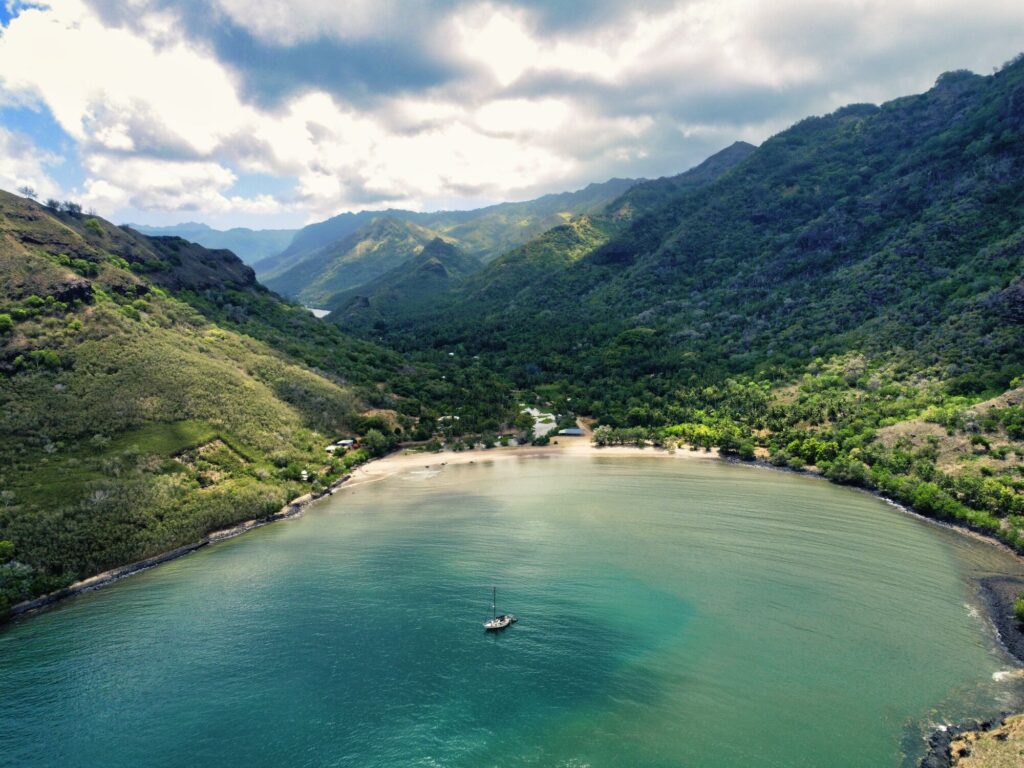
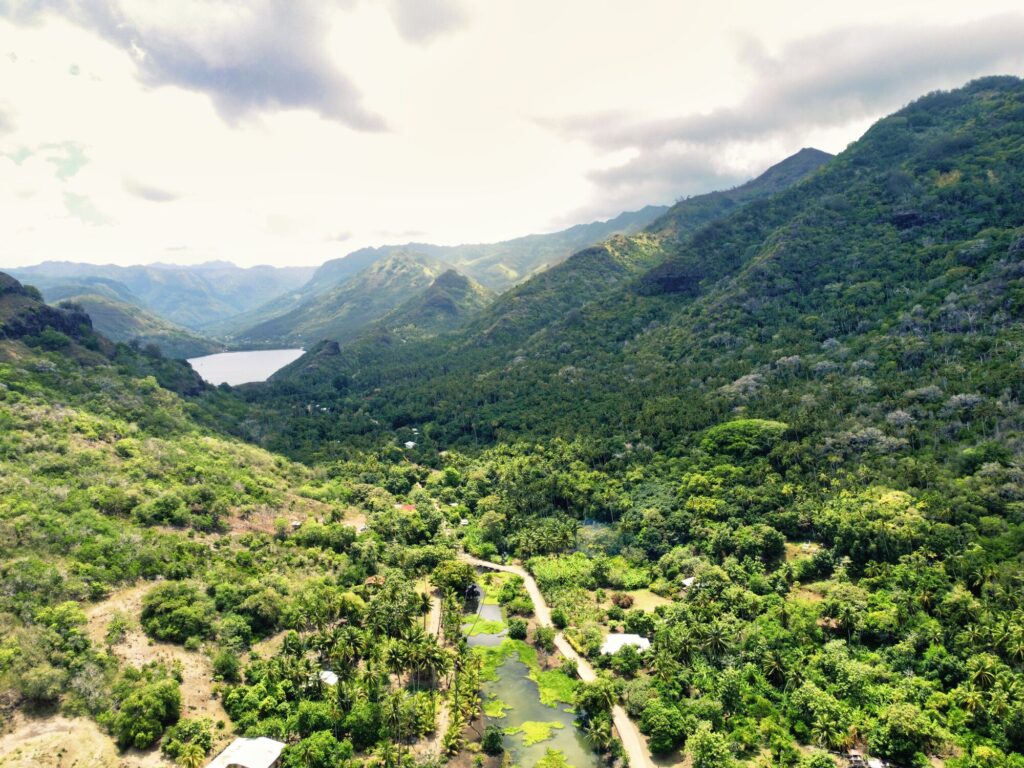

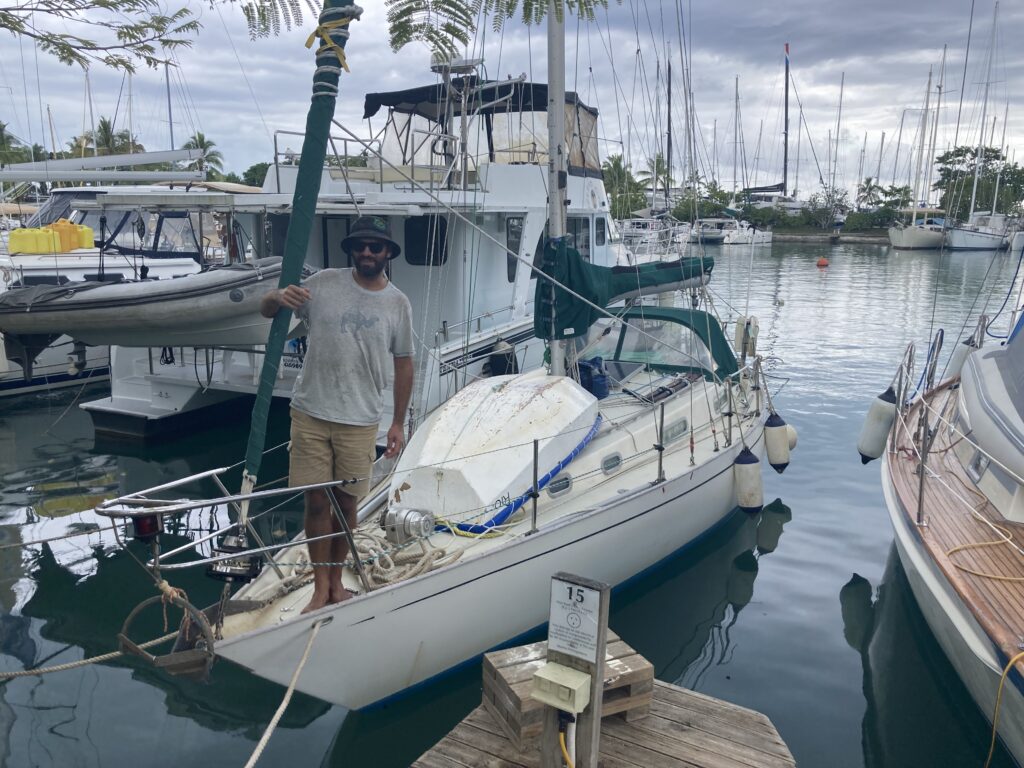
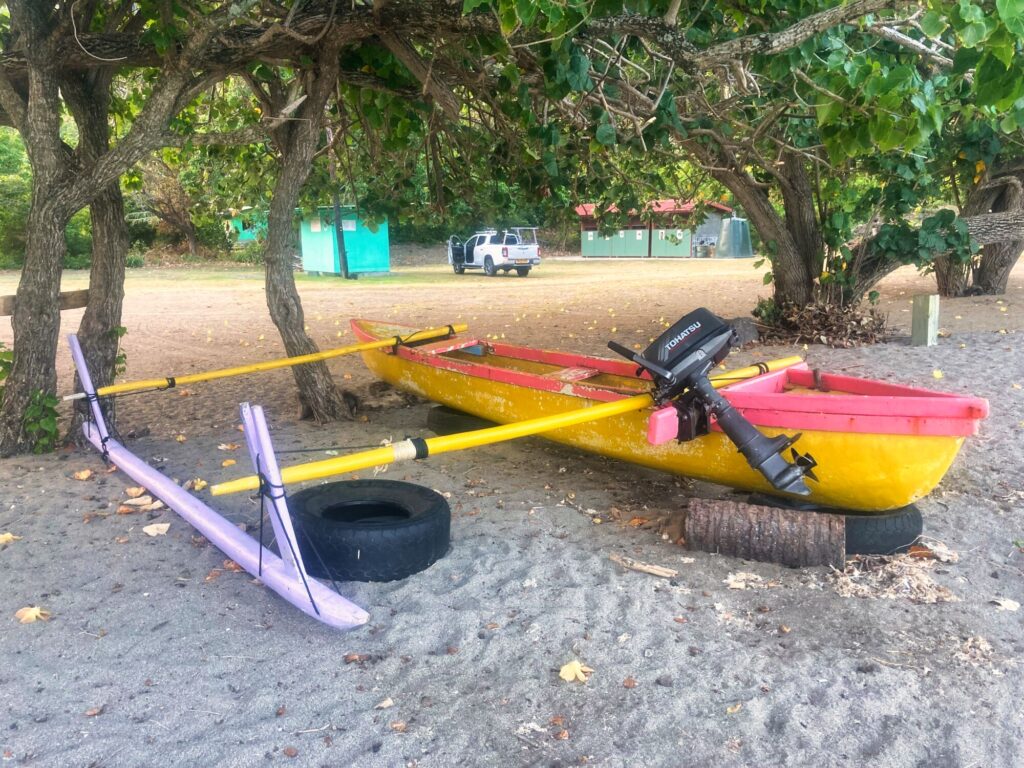
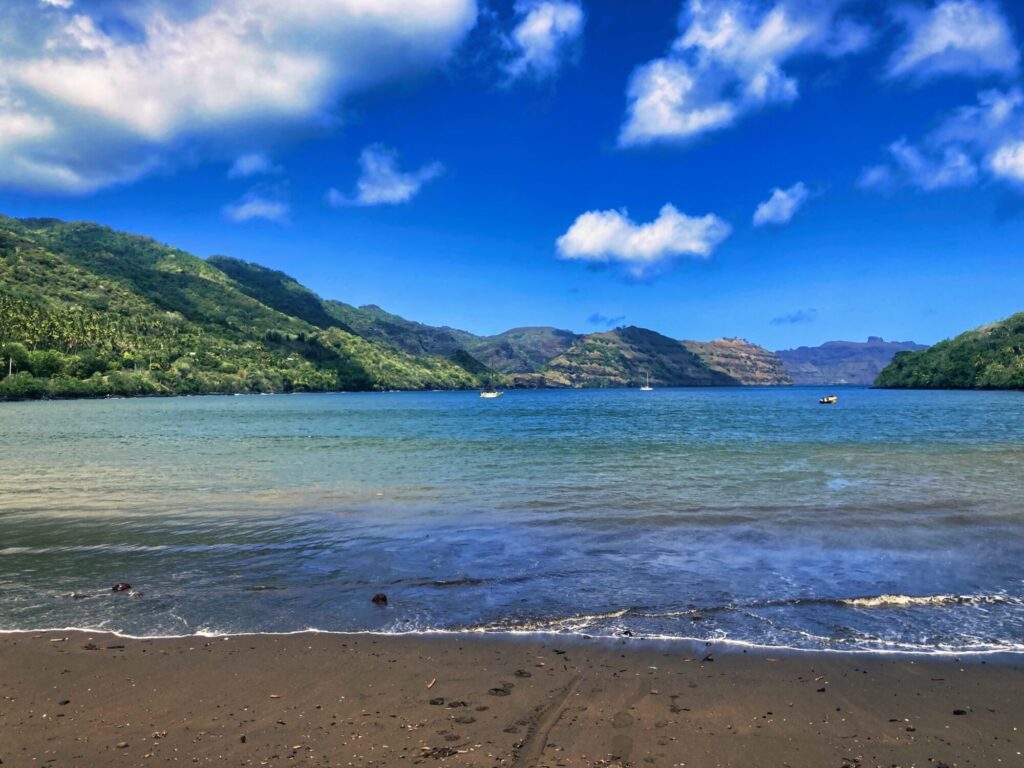
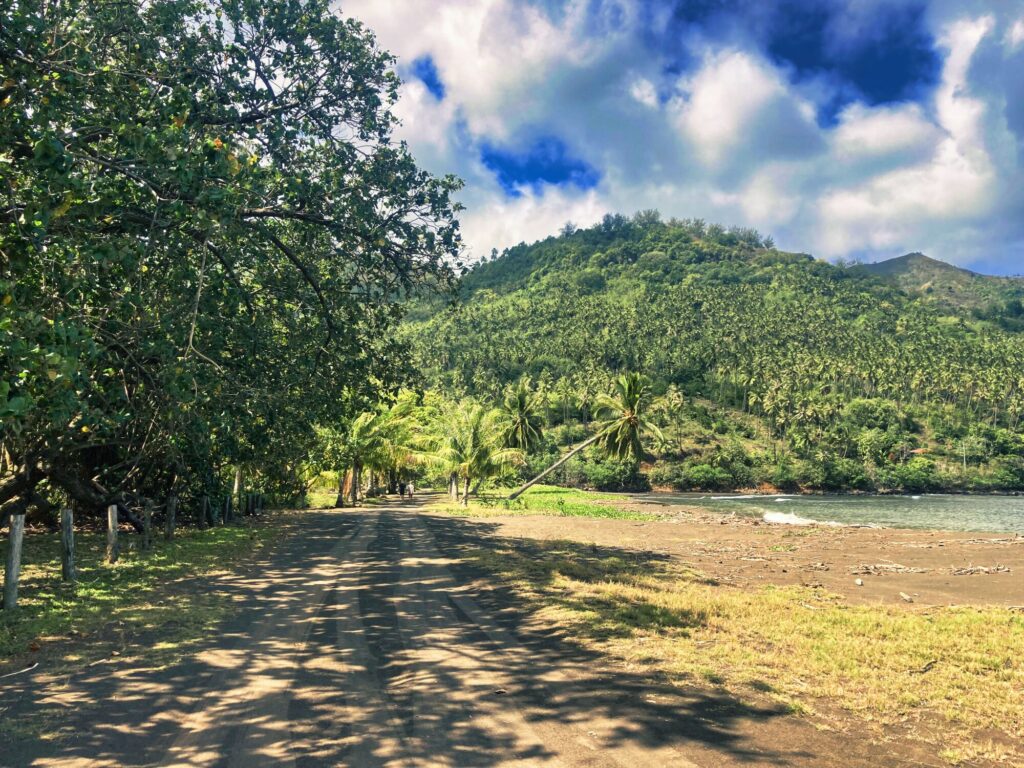
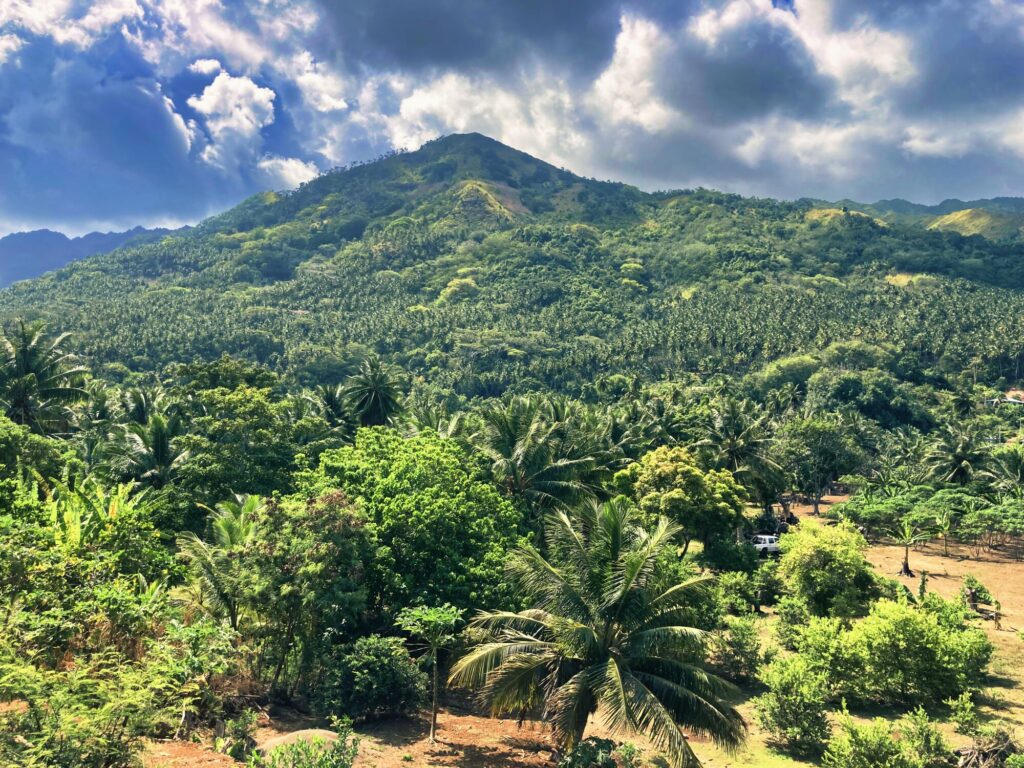
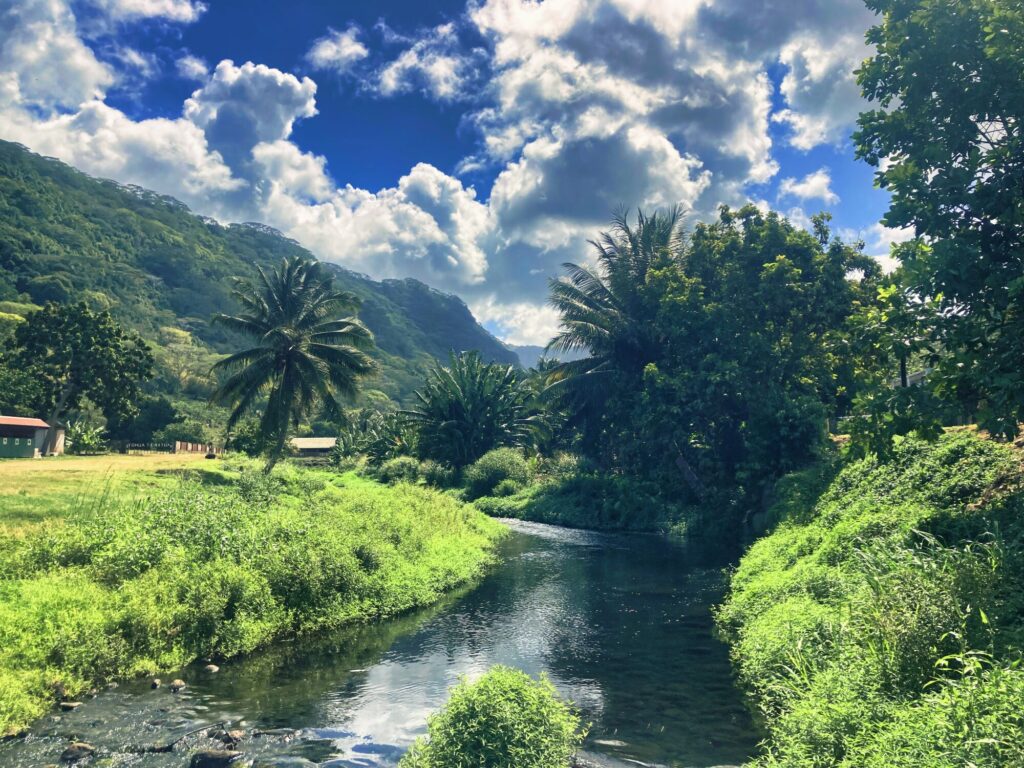

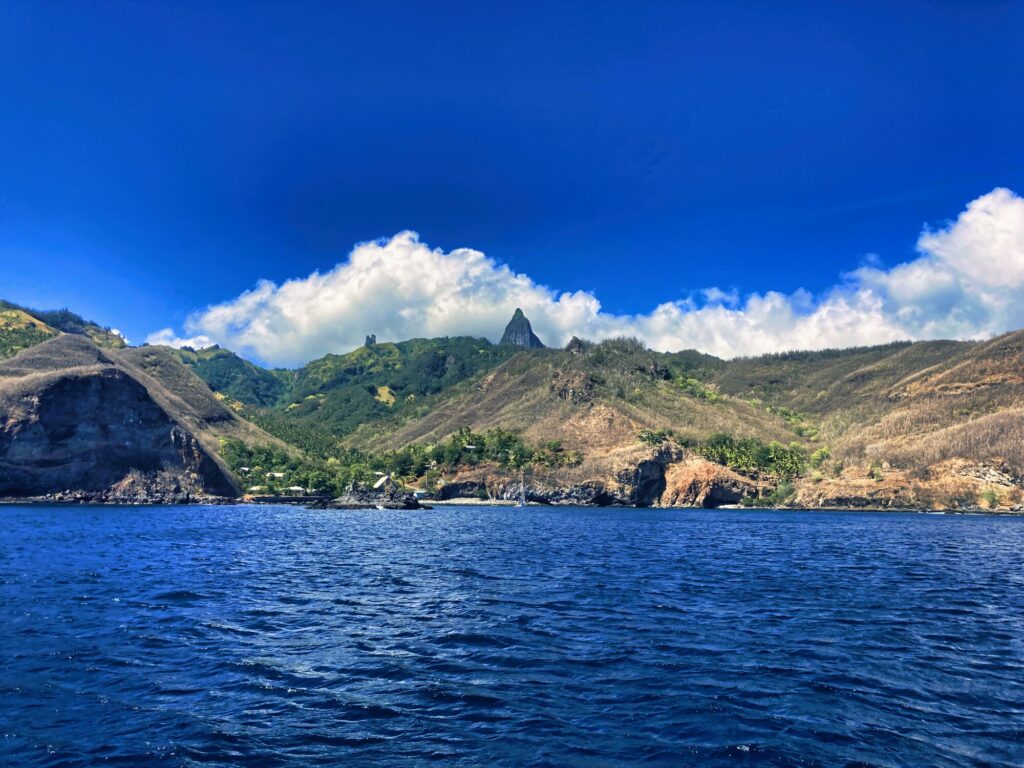
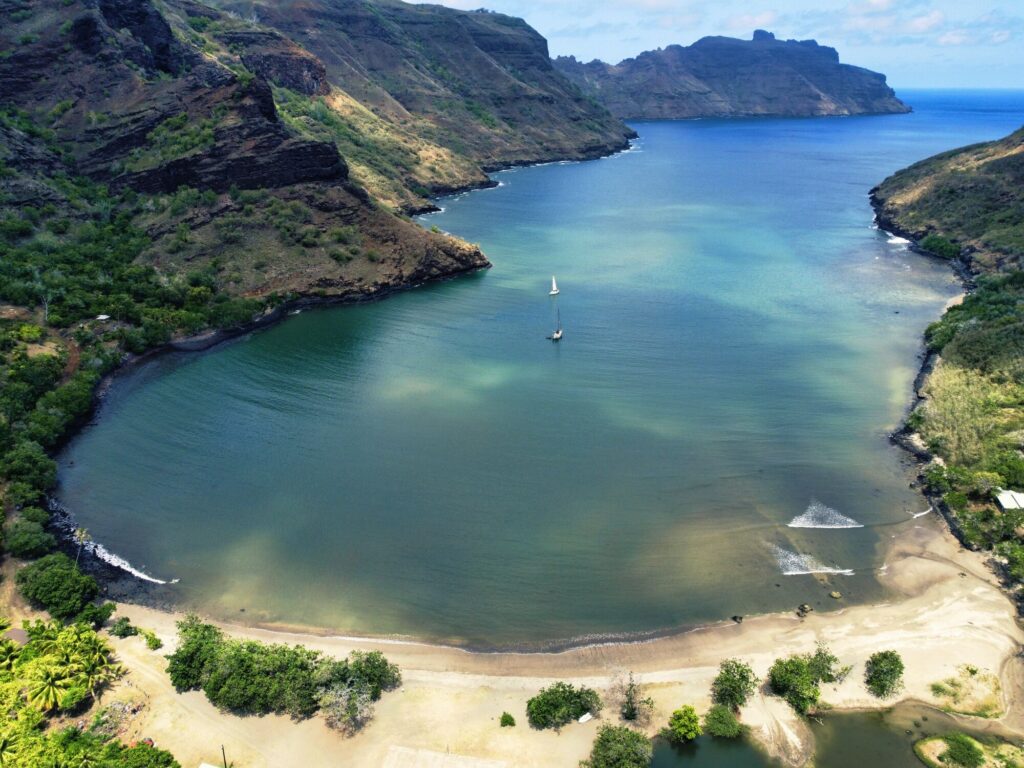
I find your photos absolutely stunning. They dont look dry at all.